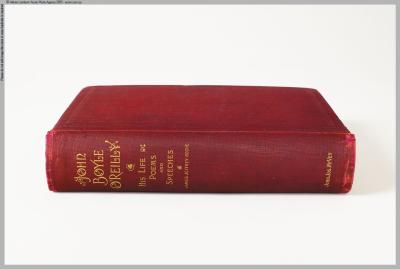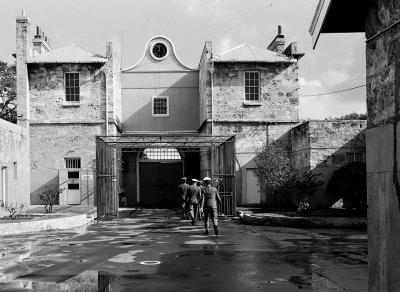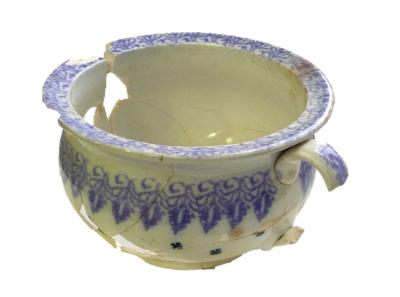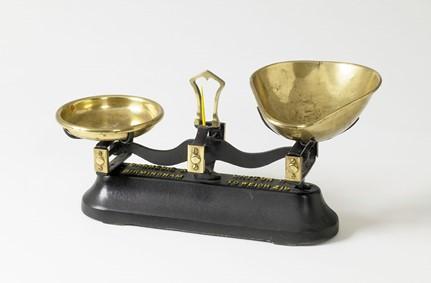SET OF BENCH TOP SCALES
1850 - 1886(a) Large, black and gold, metal, Carnegie and Layton, bench top manual scales. Wide, heavy, black metal oblong stand, with a long, black, metal balance beam suspended above with rectangular stands on each end for holding weighing pans. Fixings on sides are gold coloured metal. Written on the top of the base, in gold lettering, is 'CARNEGIE & LAYTON LTD/BIRMINGHAM TO WEIGH 2LB'.
(b) Large, deep, gold coloured metal, weighing pan. Large, pear shaped hollow pan, made from a gold coloured metal, with a thin rounded rim around the edge.
(c) Small, shallow, gold coloured metal, weighing pan. Small, round, shallow pan made from gold coloured metal, with a thin rounded rim around the edge.
Details
Details
(a) 'CARNEGIE & LAYTON LTD/BIRMINGHAM TO WEIGH 2LB'
Weights and scales were used in the Convict Establishment to help the cooks ration out a man’s portion for each dish. The object they wished to measure, such as meat, would be placed on one side of a scale and weights on the other, until they were equal. As each convict’s diet was strictly allotted, scales were used at every meal to clearly ration out each man’s portion.
The health and wellbeing of the convicts inside the Establishment was the responsibility of the Surgeon. To assist with keeping the inmates fit and well, and to avoid any outbreaks of disease, the Surgeon was also responsible for designing a specially formulated diet. Dr. Rennie, the Convict Establishment’s Surgeon, was an advocate for a vegetarian and temperance diet. Whilst he strongly advocated for an overall reduction in the amount of food in the convict’s diet, he argued for an increase in the variety of vegetables and fish served to the men. Despite his recommendations, the final say on the convict diet lay with the Establishment’s Superintendent, who in this case ignored Dr. Rennie’s recommendations, and added more bread and potatoes to the convict’s rations.
During the time of the Convict Establishment the average inmate’s daily rations were set in the Convict Establishment Rules and Regulations and included the following; for breakfast a cup of tea and bread; for lunch some meat, potatoes, or sometimes vegetables and rice, plus a bowl of gruel or oatmeal soup; and for supper a cup of tea and bread. Whilst this might sound insufficient, convicts often ate better than colonists of the time.
These convict weights are of international significance. With strong provenance to the Fremantle Prison site, they are accurately dateable to the convict period from which the site gains its World Heritage listing. These artefacts are also intact and in remarkably good condition, compared to other weights of this type and period. They have research potential and high social significance as interpretive examples of the effects of rationing and the understanding of the correlation between certain foods and health during this time.










